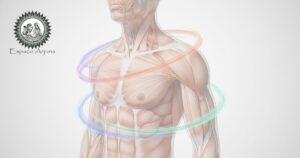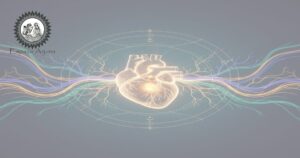Introduction
Pañcakarma – पञ्चकर्म is the classical system of therapeutic purification in the tradition of Ayurveda. More than a set of procedures, it is an integrated protocol designed to remove toxins, restore metabolic balance, and rejuvenate body and mind. Rooted in a nuanced understanding of physiology and pathology, pañcakarma operates through a sequence of preparatory, eliminative, and rehabilitative measures, each tailored to the constitution and current state of the individual. In this article, we will explore the five principal procedures, the essential preparatory (pūrvakarma – पूर्वकर्म) and post-procedure (paścātkarma – पश्चात्कर्म) steps, the central concepts of āma – आम and agni – अग्नि, and the practical diet and lifestyle measures that support an effective, safe course of pañcakarma.
Fundamentals
To understand how pañcakarma functions, some foundational concepts of Ayurveda are useful. Treatment in Ayurveda is not merely symptomatic; it seeks to correct the disturbed physiology that allows disease to arise. The removal of accumulated morbid material, normalization of digestive and metabolic fire (agni), and re-establishment of proper tissue nutrition are the pillars of this approach.
Terms-key
- Pañcakarma – पञ्चकर्म: literally “five actions” — the canonical five cleansing therapies that form the core of Ayurvedic purification.
- Pūrvakarma – पूर्वकर्म: preparatory measures (oiling, fomentation, dietary adjustments) intended to mobilize toxins into the gastrointestinal tract and make eliminative therapies safe and effective.
- Paścātkarma – पश्चात्कर्म: post-therapy regimens that consolidate the benefits, restore strength, and prevent rapid re-accumulation of morbid material.
- Āma – आम: undigested metabolic residue and toxic by-products; a pathological substance associated with sluggish agni and a key target for purification.
- Agni – अग्नि: the physiological ‘fire’ of digestion and metabolism; the state of agni determines the formation or clearance of āma.
- Doṣa – दोष and Dhātu – धातु: regulatory principles (doṣa) and bodily tissues (dhātu) whose balance and nourishment are central to health and to how pañcakarma is planned.
Central procedures: the five therapies
The five therapies of pañcakarma are not interchangeable; each addresses different channels, tissues, and types of morbid accumulation. Classical texts list slight variations, but the widely taught set comprises:
Vāmana (therapeutic emesis)
Vāmana – वमन is an induced emetic therapy primarily aimed at clearing kapha-related accumulations from the upper gastrointestinal and respiratory channels. It is indicated when kapha predominance causes obstruction, mucus stagnation, or systemic toxicosis manifesting as lethargy, heaviness, cough, or skin disorders of kapha nature. When correctly indicated and supervised, vāmana can rapidly remove obstructive material that would otherwise impair digestion and respiration.
Virecana (therapeutic purgation)
Virecana – विरेचन is a purgation procedure designed to cleanse the small intestine and biliary pathways; it is especially effective for pitta-related imbalances and for removing toxins from the liver and gut. Virecana is chosen when there is a need to discharge morbid pitta and other malas that disturb metabolic processes and tissue nutrition.
Basti (medicated enema)
Bāsti – बस्ती (often transliterated as basti) is among the most versatile of the five therapies. Delivered as oil- or decoction-based enemas, basti addresses vata-related disorders, nourishes dhatus, and clears accumulated material from the colon and pelvic region. In classical practice, basti is often considered essential for long-term rebalancing because of its direct action on vata and on lower channels.
Nasya (nasal administration)
Nasya – नस्य involves administering medicated oils or preparations through the nasal passages, aimed at clearing the head region, sinuses, and upper respiratory tract. Nasya supports mental clarity, treats disorders of the eyes, ears, nose, and throat, and serves as a gateway therapy for cranial and sensory-system cleansing.
Raktamokṣaṇa (bloodletting)
Raktamokṣaṇa – रक्तमोक्षण is the controlled removal of vitiated blood indicated in classical texts for specific conditions where blood-borne toxins predominate. In contemporary practice, the use of raktamokṣaṇa varies; in some settings it remains part of a traditional regimen, whereas in others it is replaced or limited by safer, evidence-informed alternatives. Its application must be strictly individualized and performed only by experienced practitioners.
Pūrvakarma: the art of preparation
Pūrvakarma – पूर्वकर्म is not a perfunctory preface; it is an essential phase that prepares the body for deep elimination. Without adequate pūrvakarma, strong cleansing therapies can be unsafe or ineffective. Its core aims are to loosen and mobilize morbid material, soften tissues, and harmonize agni so that expulsive procedures succeed without harming tissue vitality.
Key steps include:
- Snehana (internal and external oleation): a gentle, progressively increased use of medicated oils or ghee orally and external oil massage to lubricate tissues and draw toxins toward the gastrointestinal tract.
- Śodhana-svādhyāna (svedana, therapeutic fomentation): heat therapies, steam, or warm compresses to dilate channels and convert stagnant material into a mobilizable state.
- Dietary modulation: a digestible, warming regimen that supports agni and avoids foods that generate āma. This typically includes light cooking, spices that kindle digestion, and avoidance of heavy, cold, or difficult-to-digest foods.
- Progressive monitoring: repeated clinical assessment of pulse, digestion, stools, and general signs to determine readiness for the main therapeutic step.
These preparatory measures are customized according to the individual’s constitution (vaṭa/ pitta/ kapha tendencies), current doṣa disturbance, age, strength, and the season. Thoughtful timing and staging of pūrvakarma maximize efficacy and safety.
Paścātkarma: restoring and strengthening
Paścātkarma – पश्चात्कर्म is the counterpart to pūrvakarma. After a powerful cleansing, the organism is in a transitional state: the immediate burden of toxins may be reduced, but tissues can be weakened and vulnerable. Paścātkarma consolidates benefits by rebuilding tissue strength, normalizing agni, and preventing rapid re-accumulation of āma.
Typical post-procedural elements include:
- A gentle, progressive diet that begins with clear broths and khichari-like preparations and advances towards normal, dosha-appropriate meals.
- Rehabilitative oleation and fomentation in measured intensity to rehydrate and support tissues.
- An emphasis on sleep, rest, and moderate activity until strength returns.
- Specific rasāyana (rejuvenative) measures and tonic herbs to rebuild dhātu and support immune-metabolic resilience; these should be chosen by a qualified practitioner.
Āma, Agni, and the logic of purification
Understanding āma and agni is central to grasping why pañcakarma works. When agni – अग्नि – is impaired, digestion and cellular transformation slow, leading to the formation of āma — sticky, partially processed metabolic residue that obstructs channels and impairs tissue nutrition. This stagnant material is both cause and consequence of disturbed doṣa dynamics.
Pañcakarma intervenes at two levels: it mobilizes and expels accumulated āma and simultaneously restores agni so that new āma is less likely to form. Pūrvakarma softens and mobilizes, the core cleansing action expels, and paścātkarma rekindles agni and strengthens tissues. Without clearing āma, rejuvenative measures have limited effect; without rebuilding agni, cleansing yields only transient improvement.
Diet and lifestyle adjustments during the process
Therapeutic cleansing is inseparable from āhāra-vihāra — diet and lifestyle. The same manipulations that remove toxins must be supported by behavior and nourishment that do not reintroduce or recreate obstructive material.
General principles that govern diet and routine during pañcakarma include:
- Short-term simplicity: meals that are light, freshly prepared, warm, and easy to digest. Traditional preparations such as kitchari (moong dal and rice) are commonly used because they are nourishing yet non-straining for agni.
- Use of digestive supports: herbs and mild spices (e.g., ginger, cumin, coriander) that kindle agni without aggravating doṣa when employed judiciously under supervision.
- Timing and regularity: consistent meal times, adequate sleep, and avoiding late-night eating help stabilize digestive rhythms.
- Activity moderation: rest is emphasized during and immediately after therapies; light, restorative movements (walking, gentle stretching) are gradually reintroduced as capacity returns.
- Hydration and elimination hygiene: sufficient warm fluids and attention to bowel regularity, to assist the clearance of mobilized material.
These guidelines are general; precise āhāra-vihāra must be individualized to the person’s doṣa predominance, current state, and the specific therapies undertaken. For practical guidance, see our pages on Pūrvakarma and Paścātkarma, as well as on the conceptual foundations of Āma and Agni.
Practical considerations and safety
Pañcakarma involves powerful interventions. While its benefits are considerable, risks associated with improper application must be recognized. Key safety considerations include:
- Qualified supervision: therapies should be planned and performed by a trained Ayurvedic practitioner experienced in diagnosis, staging, and emergency procedures.
- Individualization: not all therapies suit every person. Age, chronicity, strength (bala), and comorbidities influence the choice and intensity of procedures.
- Medical integration: for individuals with significant medical conditions or ongoing pharmacotherapy, consulting biomedical professionals is essential. Pañcakarma should complement, not substitute, necessary medical care.
- Contraindications and modifications: conditions such as severe weakness, uncontrolled systemic disease, pregnancy, or acute infections may preclude full pañcakarma until stabilized.
- Hygiene and technique: procedures like raktamokṣaṇa require sterile conditions and precise protocols; basti must be administered with clean equipment and properly prepared medicines.
Pañcakarma is not a casual cleanse; it is a clinical discipline within Ayurveda, requiring precise diagnosis, skilled execution, and disciplined follow-up.
Conclusion
Pañcakarma provides a profound, time-tested approach for removing morbid accumulation, rekindling agni, and restoring the balance of doṣa and dhātu. When applied with skill, it can relieve chronic stagnation, enhance metabolism, and create a physiological foundation for rejuvenation. Its power, however, demands respect: individualized planning, careful pūrvakarma, attentive paścātkarma, and supportive diet and lifestyle are essential. Consult qualified practitioners, share your complete medical history, and choose a setting with both clinical competence and post-therapy support. For further exploration, refer to reputable sources such as the World Health Organization’s work on traditional medicine and considered texts on classical practice (see bibliography). Starting with guided introductions to pūrvakarma and paścātkarma will help you understand how cleansing and rebuilding come together for optimal health.
Pañcakarma is the classical fivefold purification system of Ayurveda that combines preparatory oleation and fomentation (pūrvakarma), five principal eliminative therapies (vāmana, virecana, basti, nasya, raktamokṣaṇa) and post-procedure rehabilitation (paścātkarma). Its therapeutic logic addresses the removal of āma — undigested metabolic residue — and the restoration of agni, the metabolic fire. Effective pañcakarma requires careful individualization, clinical monitoring, and adherence to diet and lifestyle measures that support digestion and tissue recovery. While beneficial in various chronic conditions and as rejuvenation, pañcakarma should be performed under qualified supervision and integrated prudently with other medical treatments when necessary.
- Charaka Saṃhitā (Classical treatise on principles and therapies)
- Suśruta Saṃhitā (Surgical and therapeutic traditions)
- Aṣṭāṅga Hṛdayam (Concise manual of clinical and therapeutic practices)
- World Health Organization — Traditional, Complementary and Integrative Medicine: https://www.who.int/health-topics/traditional-complementary-and-integrative-medicine
- Hindupedia — Panchakarma: https://en.hindupedia.com/wiki/Panchakarma





